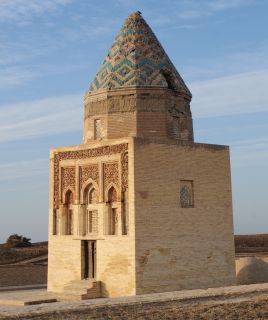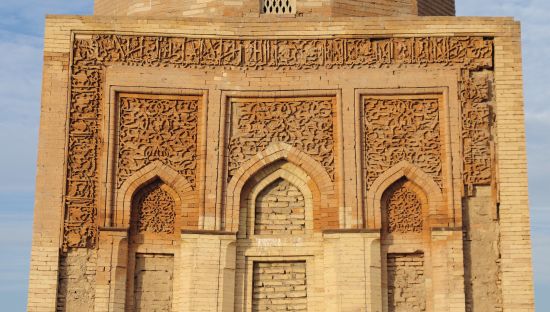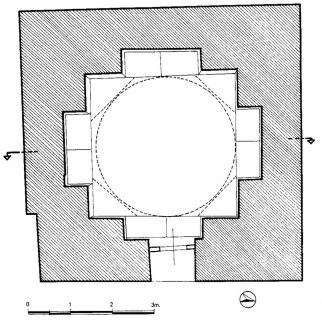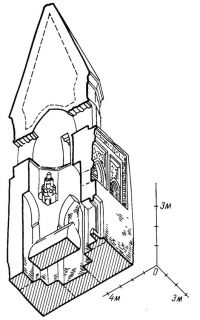Fahreddin Razi Tomb
Turkmenistan Kunya 12th Century
El Arslan TombOlarak da bilinir.
Seljuk
This building is called the El Arslan Tomb. There is na inscription indicating who is buried in the tomb. Some researchers claim it belongs ta the famous philosopher, Fahreddin Razi, and that it was built as his official tomb. Fahreddin Razi is known ta have died in Herat in 1210. The tomb was probably built after this date. Fahreddin Razi lived in Urgench until 1184. At that date he was forced ta leave the city because of opposition ta his ideas.
The tomb is also dedicated to El Arslan, a warrior who died while returning from a battle in 1172. Some researchers assert that the tomb was erected far him by his son, Sultan Teke. The tomb is built in a style that reflects the Seljuk design traditions of the period of the rule of the Atabegs. The exterior has a square plan, which turns into a dodecagon inside. The upper level is covered with a dodecagonal pyramidal cone. There are ribs of unequal size on most of the exterior surfaces. Some ribs are narrow and straight and some are curved. The walls are built of brick. The entry facade has rich terracotta decorations. Over the entry spandrel, a triple false niche draws attention. The spandrel between this area and the arches is decorated with vegetal motifs made with terracotta. This triple arch is surrounded with an inscription band on the exterior in a reverse lJtype layout. The spaces between the letters are filled with vegetal decorative motifs. There is an arched iwan placed in the middle of each interior surface. This section was used as a seating area far visitors to the tomb. The building has a centralised interior plan with squinches ensuring the transition to the dome. The squinches are in the form of stalactites. The interior of the tomb is fit by small windows placed on main surfaces of the drum.
Cezar, M., Anadolu Öncesi Türklerde Şehir ve Mimarlık, İstanbul, 1977,s.384, 386-390.
Sayan, Y., Türkmenistan'daki Mimari Eserler, Ankara, 1999, s.141-145





